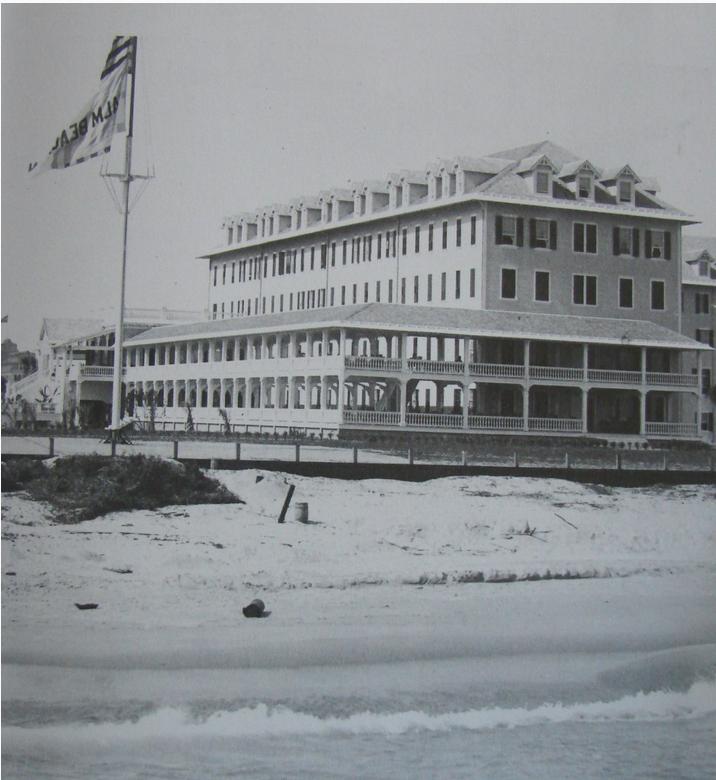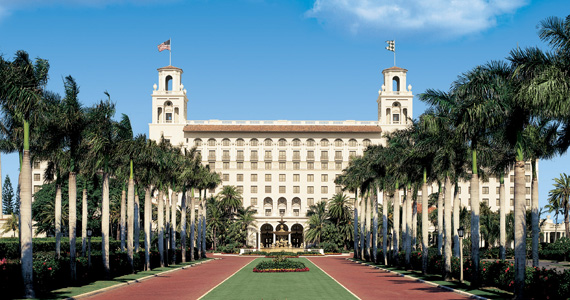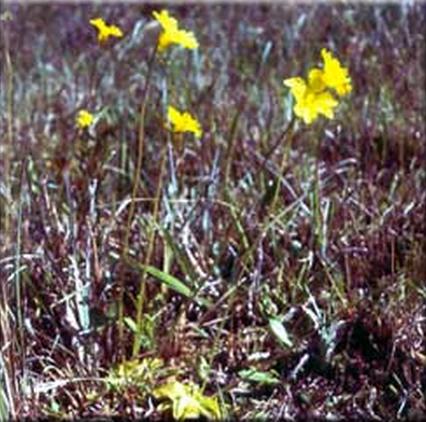| Works of Annie Fields |
by
Annie Fields
1896
Part 9
Florida
[ Monday 2 March ]
Monday March 2d A good night quite smooth with a great moon. We were able to take great comfort in sitting up until near midnight. The air was cool -- The scene splendid. The Life of Lacordaire by Dora Greenwell was my companion all day -- finished it Monday A.M. before our arrival. That book and Jowett's Sermons have been sincere joy and help through the experiences of our sometimes tedious journey -- trying -- rather than tedious --*
The waves tossed our boat about well when we came to land at Palm Beach. It was hard rowing to come to shore; when we reached the pier the great rollers made it seem almost impossible to land; but by aid of the Captain
Page 100
and his men who held hard in the boat and men on the steps who gave us strong hands we managed in spite of our petticoats to get safely up the wave washed steps. How we were blown!
Anything wilder than this shore cannot be seen{.} Of
course the hotels and the piers and the planted land do
something to take away this effect, but everything man does
looks so slight and perishable by the side of this tumultuous
sea, the unending line of beach, the fierce sunlight and the
flocks of black carrion ^birds^ ^turkey buzzards^ whirling,
lighting, posing, feeding with terrible intentness as if the age
of man did not exist -- They give me a sense of power such as no
other birds have ever given me ^done^ -- partly no doubt
because they come so close to us.* The picture which we
knew of when we were children, of an eagle carrying a baby to
its wild nest no longer seems a myth.*
Later in the day were walked through a beautiful avenue
of palms to the second hotel -- The sunset was splendid --
setting in the fiery red light of [unrecognized word]
behind the palm trees. Again we admire her as we did in
St. Augustine, in the early days of
the hotel, the sense of beauty which in Flagler seems to show.* He has made these wild places lovely for human habitation.
[Between the above line and the next is inserted in very
light pencil this sentence: the hotels here are not
especially beautiful -- It is the gardens]
Notes

Image from Page 100 of the manuscript.
Collection
of the Massachusetts Historical Society
Readers are invited to identify the unrecognized word.
The Life of Lacordaire by Dora Greenwell ...
Jowett's [Sermons ?]: Wikipedia
says: "Jean-Baptiste Henri-Dominique Lacordaire (12 May 1802 -
21 November 1861), often styled Henri-Dominique Lacordaire, was
a French ecclesiastic, preacher, journalist and political
activist. He re-established the Dominican Order in
post-Revolutionary France." Wikipedia
also says: "Dora Greenwell, born Dorothy Greenwell (1821–1882),
was an English poet." Her biography of Lacordaire was
published in 1867.
And according to Wikipedia,
"Benjamin Jowett ... (15 April 1817 - 1 October 1893) was
renowned as an influential tutor and administrative reformer in
the University of Oxford, a theologian and translator of Plato
and Thucydides....[H]is interest in theology ... found an outlet
in occasional preaching. The university pulpit, indeed, was
closed to him, but several congregations in London delighted in
his sermons, and from 1866 until the year of his death he
preached annually in Westminster Abbey..... Three volumes of
selected sermons were published posthumously."
black carrion ^birds^ ^turkey buzzards^: The turkey
vulture or buzzard is the most common carrion-eating bird
of the Americas.
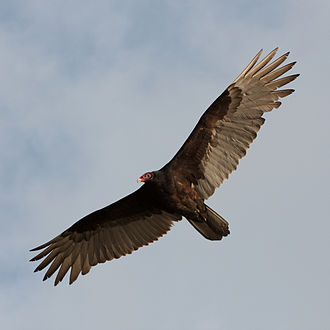
Turkey vulture in flight in Florida
Courtesy of Wikipedia
picture which we knew of when we were children, of an eagle
carrying a baby to its wild nest no longer seems a myth:
The mythical story of an eagle carrying away a person suggests
the story of Zeus
and Ganymede. Wikipedia says: "In one version of the
myth, he is abducted by Zeus, in the form of an eagle, to serve
as cup-bearer in Olympus." However Ganymede usually is not
thought of as a baby. The image below comes from Burt G.
Wilder's "Kings of the Air," Scribner's Monthly
Volume 1 Issue 3 (January 1871) pp. 239-246. In the
article, Wilder says: "The illustration depicts a terrible event
which occurred more than thirty years ago; a similar tragedy was
enacted in Missouri in 1868; and now in the present year (1870)
a large eagle, which, by a rope upon its leg, appeared to have
escaped from some cage, is said to have fastened its beak and
talons into the body of a boy of fifteen, and was beaten to
death before it would loosen its hold."
Though such stories recur down to the present
day, they are viewed skeptically by ornithologists.
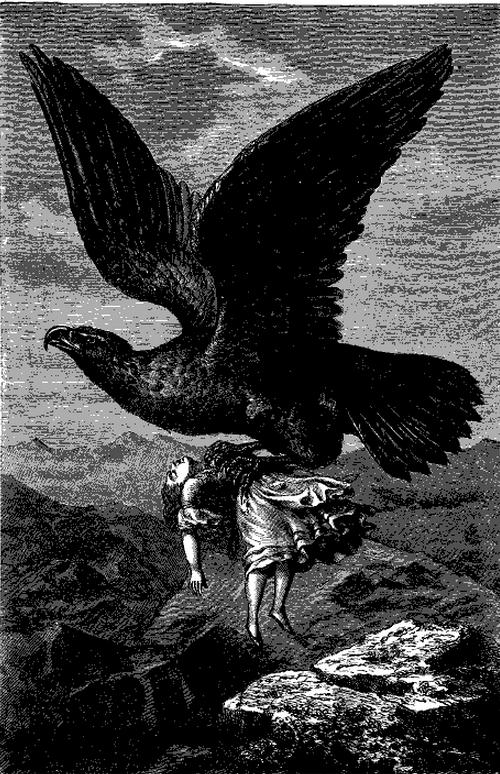
Eagle carrying away a young girl
From Wilder, p. 240.
a beautiful avenue of palms to the second hotel ... Flagler
... St. Augustine: Wikipedia
says: "Henry Morrison Flagler (January 2, 1830 – May 20, 1913)
was an American industrialist and a founder of Standard Oil. He
was also a key figure in the development of the Atlantic coast
of Florida and founder of what became the Florida East Coast
Railway. He is known as the father of both Miami and Palm Beach,
Florida....
"Flagler completed the 1,100-room Royal
Poinciana Hotel on the shores of Lake Worth in Palm Beach and
extended his railroad to its service town, West Palm Beach, by
1894, founding Palm Beach and West Palm Beach. The Royal
Poinciana Hotel was at the time the largest wooden structure in
the world. Two years later, Flagler built the Palm Beach Inn
(renamed Breakers Hotel Complex in 1901) overlooking the
Atlantic Ocean in Palm Beach."
Presumably, Fields and company, stayed at one
Flagler hotel in Palm Beach and visited the other during their
time in Palm Beach. They were familiar -- from earlier
stays -- with Flagler's Ponce de Leon hotel in St. Augustine,
where they would recuperate from this cruise for several days
before returning to Massachusetts, Of the Royal
Poinciana Hotel, Wikipedia says: The six-story,
Georgian-style hotel was built as a winter retreat for the elite
by Henry Flagler .... When he began buying tracts of land here
... Palm Beach was a desolate barrier island on Florida's
Atlantic coast. That began changing, however, when Flagler
extended his Florida East Coast Railway to West Palm Beach. The
Royal Poinciana Hotel, built beside the Lake Worth Lagoon, was
intended to accommodate his railroad's passengers escaping cold
northern winters. Ground was broken May 1, 1893, and the hotel
opened on February 11, 1894—welcoming 17 guests."
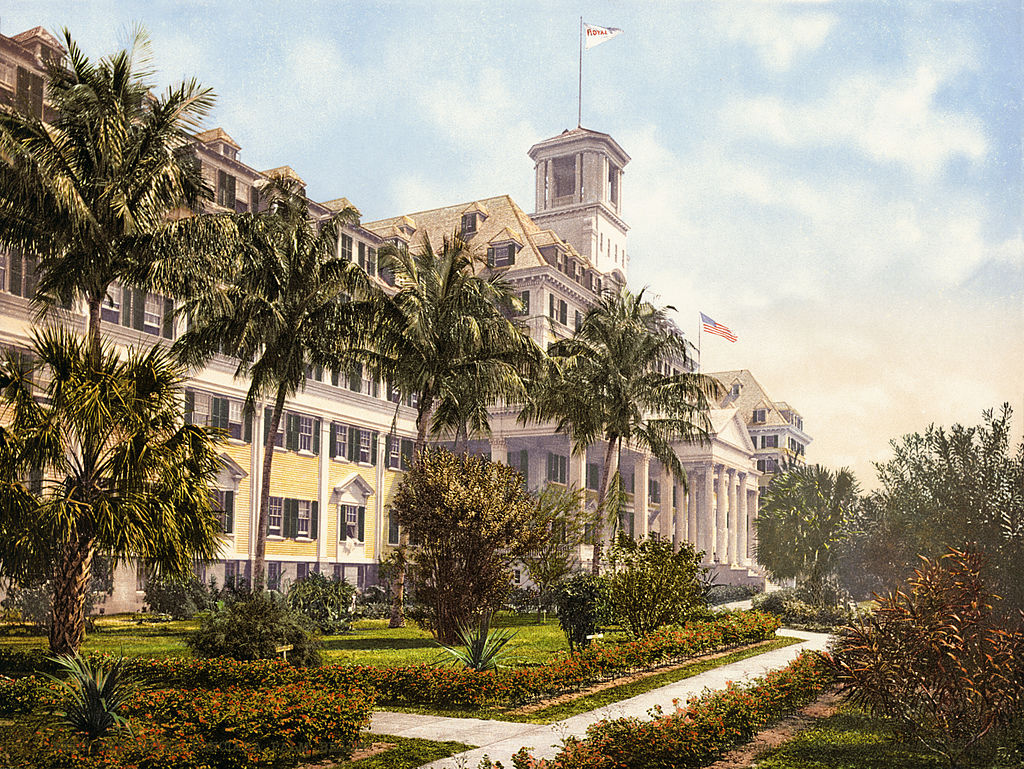
The Royal Poinciana in 1900
Image from Detroit Publishing Co.
courtesy of Wikipedia, who has it from the United States Library of Congress Prints and Photographs
under the digital ID ppmsca.18068.
It is likely Fields stayed in the Poinciana
and visited the new Palm Beach Inn, "the second hotel," of which
Wikipedia says: "The Breakers Hotel .... [f]irst known as The
Palm Beach Inn, ... was opened on January 16, 1896 by oil, real
estate, and railroad tycoon, Henry Flagler, to accommodate
travelers on his Florida East Coast Railway. It occupied the
beachfront portion of the grounds of the Royal Poinciana Hotel,
which Flagler had opened beside Lake Worth Lagoon facing the
inland waterway in 1894. Guests began requesting rooms "over by
the breakers," so Flagler renamed it The Breakers Hotel in 1901.
The wooden hotel burned on June 9, 1903 and was rebuilt, opening
on February 1, 1904. Rooms started at $4 a night, including
three meals a day."
The Breakers Hotel - 2015
With its avenue of palms.
Courtesy of Breakers Press Room
Page 101 continued
[ Tuesday 3 March ]
Tuesday morning. After a rest from the ship, more
delightful than words can express. We now start for St.
Augustine.
Wednesday morning March 4th Reached St. Augustine in the evening after a long dusty ride of eight hours in the train.* It was not excessively warm because on one side was the sea nearly the whole time with sometimes acres of pineapple bushes and sometimes palmettos and sometimes only the white beach with its rolling waves between us and the deep sea.
It was cool when we came into the station and the air fragrant with blossoms. The little place was very quiet but beautiful under the stars with the fine [architecture ?] dimly seen in the half light. We found a few letters and went to bed in comfortable but not over old picturesque rooms.
Up early -- The air being cool and inspiring.
[ Thursday 5 March ]
Thursday, March 5th Lovely weather. Yesterday they
were taking up from the gardens flowers or
^and^ plants which have probably been killed by the
frosts{.} There have been three severe "freezes" as they
say, here this winter. The rose gardens have suffered with the
rest.
Page 102
In the afternoon a carriage was put at our disposal and
we drove across the new bridge where we used to take the
little ferry.* Roads have been made over on Anastasia
Island and the whole place is being tamed. When I think of
the dead wild-cat ^ just shot^ that ^we found^ we in our
[the superimposed over our] path once over there less
than ten years ago I feel as if everything except the vast wild
sea would soon be brought into subjection. It is still
beautiful but [deleted word] has surely lost something of
the old picturesqueness. There was a fire in the old part
of the town a few years ago which has swept away some of the old
coquina houses.* But birds are in the hotel gardens now
and the architecture has grown rather than lost in beauty
---------- and it is quiet. We like it very much.
[ Friday 6 March ]
Friday March 6th Left with our friends for Jacksonville. Drove at once to the yacht packed up such clothing as we were likely to need, took a last luncheon together, "Sadie" wrote up and signed "the Log" -- then bidding our companions farewell we were rowed ashore. Kind Mr. Pierce went with us, bought our return tickets to St. Augustine where we are to rest a few days, and said goodbye only after seeing us safely into the train. It was very warm but he returned again just before to [we was intended?] started to see if he could get better places for us -- From first to last{.} Here ends the journal of our voyage to the westmost Indies{.}
Page 103
Saturday 7 - Tuesday 10
March
March 7th & to 9th 10th at the Ponce de Leon. In the afternoon of the 10th we drove into the woods and through Moccasin Swamp* with Mr. Pell, Mrs. Smith and a [Miss ?] [Samson corrected] [added in pencil at the end of the sentence: Sampson?] found Princulas* in bloom –
in the train: By 1896, Henry Flagler had completed
a direct rail line from New York to St. Augustine and further
south. See above for further information on Flager's
hotels in Palm Beach and St. Augustine. Jewett and Fields
had stayed at the Hotel Ponce de Leon in St. Augustine in
1888 and 1890. The hotel figures significantly in Jewett's
1890 story, "Jim's
Little Woman."
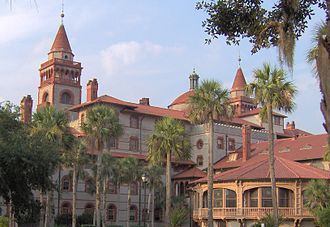
Ponce de Leon Hotel in St. Augustine Florida
Courtesy of Wikipedia
In America's First City: St. Augustine's Historical
Neighborhoods, Karen Harvey reports that the first
bridge to Anastasia Island was built in 1895, replacing the
earlier ferry service.
a fire in the old part of the town ... has swept away some
of the old coquina houses: In 1895, a major fire in
the area north of the Plaza de la Constitucion destroyed many
dwellings and businesses. Coquina is a form of limestone
containing broken fragments of fossil
shellfish. Many major projects in St.
Augustine before the twentieth century were built of coquina,
including the sea wall, the "old gates" and Fort Marion.
Sadie: Sadie is one of Jewett's nicknames.
Apparently she wrote some account of at least part of their
journey in the yacht's log. This text has not been located.
Moccasin Swamp: Moccasin Swamp is now part of the
John M. Bethea State Forest, which is forms the southern end of
the Okefenokee National Wildlife Refuge in southern Georgia,
west of St. George, GA. This is about 35 miles northwest
of Jacksonville. FL. That Fields visited this swamp in the
afternoon of March 10 suggests that this made part of her return
journey home from St. Augustine.
Mr. Pell, Mrs. Smith, and Miss Samson or
Sampson have not be identified. Assistance is welcome.
Research assistance: biologist Richard Roehrdanz, retired from USDA, and three members of an heirloom flowers group: Joel T. Fry, Curator at Philadelphia's John Bartram Association, Dr. Arthur O. Tucker, Emeritus Professor at the University of Delaware and Emeritus Director DOV, Dept. of Agriculture & Natural Resources, and Nancy Wetzel, retired Sarah Orne Jewett House Gardener.
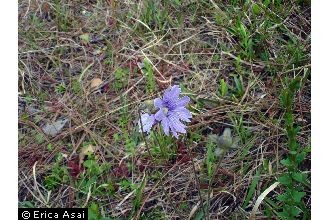 Pinguicula caerulea blueflower butterwort copyright Eric Asai Courtesy of USDA Natural Resources Conservation Service |
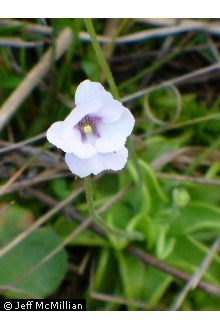 Pinguicula pumila small butterwort copyright Jeff McMillian Courtesy of USDA Natural Resources Conservation Service |
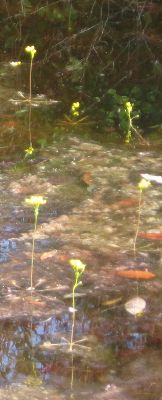 Utricularia inflata Okefenokee NWR by Terry Heller, February 2016 |
Edited by Terry Heller, Coe College.
The original of this diary is in the collection of the Massachusetts Historical Society. My copy is from a microfilm, available courtesy of the University of Kansas Libraries, Lawrence Kansas: Annie Adams Fields Papers 1852-1912. Folio PS 1669.F5 Z462 1986, Reel 2.
| Works of Annie Fields |
